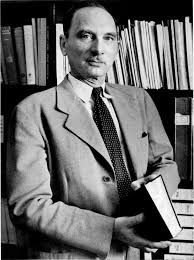Siegfried Nadel
(Siegfried Ferdinand Nadel, Siegfried Frederick Nadel, Fred Nadel)
Siegfried Ferdinand Nadel was born on 24 April 1903 in Lviv (at that time part of the Habsburg monarchy, today Ukraine). In 1912 the family moved to Vienna. Since 1920 Siegfried Nadel received music lessons under Richard Robert (piano) and Joseph Marx (composition) at the music academy. He completed his school in 1921 with the matura and then enrolled at the university to study musicology, fine arts and philosophy. He completed his studies in 1925 with a doctoral thesis ("Zur Psychologie des Konsonanzerlebens") in musicology under Karl Bühler.
After his studies Siegfried Nadel first worked as a conductor, lecturer, music teacher and music author. In 1930 he completed his habilitation treatise and submitted it to the Vienna university. The title of his treatise was "Der duale Sinn der Musik. Versuch einer musikalischen Typologie" and dealt with aspects of comparative musical theory, psychology of music and aesthetics of music. The examination board at the university did not accpeted the treatise and requested Siegfried Nadel to withdraw his writing. Siegfried Nadel did so but after this incident quit his studies in musicology. He only completed his book on Ferruccio Busoni (published in 1931) and then focused on studies in anthropology.
Siegfried Nadel moved to Berlin and studied African languages under Diedrich Westermann. In 1932 he received a Rockefeller Foundation Fellowship to study anthropology at the London School of Economics under Charles Seligman and Bronislaw Malinowski. A year later he received under scholarship to do field research at the Nupe tribe in Nigeria. This led to a doctoral thesis about the Nupe in 1935 ("Political and Religious Structure of Nupe Society"). In the following years Siegfried Nadel continued his studies about the Nupe and published further books about them. Especially his work "A Black Byzantium. The Kingdom of Nupe in Nigeria", published in 1942, is counted as a classic of anthropolgy nowadays.
Meanwhile Siegfried Nadel had acquired the British citizenship and during World War II he enlisted in the Sudan Defence Force and fought in the East African Campaign of the British Empire. After World War II Siegfried Nadel first worked as a lecturer for anthropolgy at the Durham University. In 1950 he was appointed professor at the newly founded chair in anthropolgy at the university in Canberra (Australia).
Siegfried Nadel died unexpectedly on 14 January 1956 of a coronary thrombosis in Canberra (Australia).
During his early years Siegfried Nadel also composed music. But all his personal manuscripts were destroyed during a bombing of London in 1940. Among his compositions were a piano concerto, string quartets and songs.
In my possession is the autograph manuscript of "Drei Lieder für Frauenstimme" by Siegfried Nadel. The work was composed in March 1928 and is scored for female voice and piano. The three songs are titled:
- Landschaft (poem by Jens Peter Jacobsen)
- Lied zur Flöte (poem by Max Dauthedey)
- Abbild (poem by Peter Hille)
Due to the fact that all the autograph manuscripts of works by Siegfried Nadel were destroyed during a bombing of London in 1940, this manuscript is a rarity and of great value. No other compositions by Siegfried Nadel has survived and are known today as far as I know.
